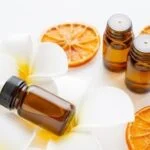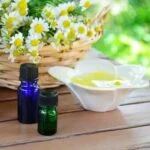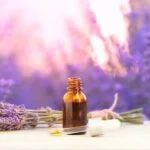Are you looking for a natural and therapeutic way to freshen up your living space? In this article, we will guide you on how to make an aromatherapy room spray.
Aromatherapy has been used for centuries to promote a sense of well-being and relaxation, and room sprays are a convenient way to enjoy the benefits of essential oils in any room of your home or workspace. We’ll explore the benefits of using aromatherapy room sprays and introduce the idea of creating your own personalized blend, allowing you to tailor the scent to your specific preferences.
Before we get into the nitty-gritty of creating your own DIY room spray, it’s important to understand the different essential oils available and their therapeutic properties. We will provide a detailed guide on various essential oils and how to choose the right ones for your room spray. Whether you’re looking for a calming scent for your bedroom or an uplifting aroma for your office, we’ll help you select the perfect combination of essential oils.
In addition to understanding essential oils, we will also discuss the tools and ingredients needed for making a DIY aromatherapy room spray. You can rest assured that all the necessary items can be easily found and purchased, making it accessible for anyone interested in trying out this natural air freshener alternative. So, let’s dive into this wonderful world of aromatherapy and start creating our own personalized blend of room spray.
Essential Oils and Their Benefits
When it comes to making an aromatherapy room spray, essential oils play a crucial role in not only creating an enticing scent but also providing therapeutic benefits. Each essential oil has its own unique properties that can contribute to the overall experience of using a room spray. For example, lavender essential oil is known for its calming and relaxing effects, making it a perfect choice for a spray intended for use before bedtime.
Other popular essential oils include peppermint, which can help to invigorate the senses and promote alertness, and eucalyptus, known for its refreshing and clear respiratory benefits. Before choosing your essential oils for your DIY room spray, it’s important to consider the specific benefits you are looking to achieve. Take into account the mood or atmosphere you want to create in the space where the room spray will be used.
To make an aromatherapy room spray that is tailored to your needs, take some time to research and understand the various health and wellness benefits associated with different essential oils. Consider what therapeutic properties are most important to you based on your personal wellness goals. Whether you are seeking relaxation, mental clarity, or an energy boost, there is likely an essential oil that can help you achieve your desired outcomes.
Selecting the right combination of essential oils for your room spray requires some experimentation and personal preference. Mixing and blending different scents can help create a customized aroma that suits your taste and supports your wellbeing. By understanding the benefits of each essential oil and how they work together harmoniously, you can create an aromatherapy room spray that not only smells wonderful but also provides holistic wellness advantages.
Tools and Ingredients Needed
When it comes to making your own aromatherapy room spray, having the right tools and ingredients is essential. To start, you will need a clean, empty spray bottle that can hold at least 100ml of liquid. It’s important to use a glass bottle, as essential oils can degrade plastic over time. Additionally, you will need distilled water and either witch hazel or vodka as a base for your room spray.
In terms of essential oils, there are countless options to choose from, each with their own unique benefits and properties. Common essential oils used in room sprays include lavender for its calming effects, eucalyptus for its refreshing scent, and peppermint for an invigorating aroma. It’s important to research the specific therapeutic properties of different essential oils to determine which ones best suit your needs.
Finding the right tools and ingredients for your DIY aromatherapy room spray is relatively easy. Most health food stores carry a variety of essential oils, as well as empty glass bottles and other necessary supplies.
You can also purchase these items online from reputable retailers specializing in natural wellness products. By gathering all the tools and ingredients needed in advance, you’ll be well-prepared to create your very own personalized blend of aromatherapy room spray that suits your individual preferences and needs.
In this section, we have covered the essential tools and ingredients needed for creating an aromatherapy room spray. In the following sections, we will delve into a step-by-step guide on how to make the room spray using these components while also discussing safety precautions and alternative recipes for blending techniques. This comprehensive guide will empower you to create your very own customized scents that cater specifically to your desired atmosphere and mood enhancement needs.
Step-by-Step Guide to Making the Room Spray
Gathering the Materials
Before you start making your own aromatherapy room spray, it is important to gather all the necessary materials and tools. You will need a clean spray bottle, distilled water, witch hazel or vodka (as a preservative), and of course, your chosen essential oils. Make sure to use a high-quality spray bottle to ensure that it will effectively disperse the room spray.
Measuring and Mixing
To create your personalized blend of aromatherapy room spray, you will need to measure out the ingredients correctly. Start by adding about 2 ounces of distilled water and 2 ounces of witch hazel or vodka into your spray bottle. Then, carefully add in around 20-30 drops of your chosen essential oil or combination of oils. The number of drops may vary depending on the potency of the oil and your personal preference for scent strength.
Shaking and Testing
Once all the ingredients are in the spray bottle, seal it tightly and shake well to thoroughly mix everything together. After shaking, do a quick test spray to see if you are satisfied with the scent strength and overall fragrance. If you think it needs more essential oil, carefully add a few more drops at a time until you achieve your desired level of aroma. Keep in mind that some essential oils have stronger scents than others, so adjust accordingly.
By following these simple steps, you can easily create your very own custom aromatherapy room spray that perfectly suits your preferences and needs. Now that you know how to make an aromatherapy room spray, feel free to experiment with different essential oil combinations for refreshing, calming, or invigorating scents.
Safety Precautions and Proper Usage
When making an aromatherapy room spray, it’s important to consider safety precautions and proper usage of essential oils. These potent substances can have various effects on the body, and it’s crucial to handle them with care.
Here are some safety precautions to keep in mind when working with essential oils:
- Always dilute the essential oils properly before using them in a room spray. Concentrated essential oils can be too strong and may cause skin irritation or other adverse reactions.
- Avoid direct contact with undiluted essential oils on the skin. If accidental contact occurs, wash the affected area with soap and water immediately.
- Keep essential oils out of reach of children and pets, as they can be harmful if ingested.
- Store essential oils in dark glass bottles in a cool, dry place to preserve their potency and prevent degradation.
Proper usage of aromatherapy room sprays is also important for maximizing their benefits:
- Spray the room spray into the air, away from your face, furniture, and fabrics, to avoid staining or damage.
- Avoid spraying the room spray directly onto your skin or inhaling it at close range. Instead, allow the mist to settle naturally in the air for inhalation.
- Use caution when using aromatherapy room sprays around individuals with respiratory conditions or sensitivities to strong scents.
By following these safety precautions and guidelines for proper usage, you can enjoy the therapeutic benefits of aromatherapy room sprays while ensuring a safe and enjoyable experience for yourself and others.
Remember that while essential oils have many benefits, they must be used responsibly. Always consult a certified aromatherapist or healthcare professional if you have any concerns about using essential oils or creating your own DIY products.
Alternative Recipes and Blending Techniques
Creating your own aromatherapy room spray allows you to tailor the scent to your specific needs and preferences. While there are countless essential oil combinations to choose from, some stand out for their unique benefits and pleasant aroma. Below are a few alternative recipes and blending techniques that you can experiment with to create your personalized room spray.
Aromatherapy for Relaxation
If you’re looking to create a calming atmosphere in your home, consider using lavender, chamomile, and bergamot essential oils. Lavender is known for its relaxing properties, while chamomile has a soothing effect on the mind and body. Bergamot adds a citrusy note that uplifts the mood. Combine these oils with water or witch hazel in a spray bottle for an instant stress-relief blend.
Aromatherapy for Energy
To boost energy and mental alertness, try blending peppermint, rosemary, and lemon essential oils. Peppermint has invigorating effects, while rosemary enhances cognitive performance. Lemon adds a fresh and uplifting scent that promotes wakefulness. This energizing combination can be used in your workspace or any area where you need an extra burst of vitality.
Aromatherapy for Wellness
For overall wellness and immune support, consider creating a blend with eucalyptus, tea tree, and cinnamon essential oils. Eucalyptus and tea tree have antimicrobial properties that help purify the air, while cinnamon adds a warm and comforting aroma. This aromatic combination can be especially beneficial during the colder months when immune support is crucial.
Experimenting with different essential oil combinations allows you to cater to your specific needs and preferences when it comes to aromatherapy room sprays. Whether you’re seeking relaxation, energy, or wellness benefits, there’s a wide range of scents and therapeutic properties to choose from. Remember to always research the potential effects of each essential oil before creating your blend to ensure safety and effectiveness.
Customizing and Personalizing Your Room Spray
When it comes to creating your own personalized room spray, the possibilities are endless. One of the best things about making your own room spray is the ability to customize it according to your personal preferences and needs. Whether you prefer a citrusy, energizing scent or a calming lavender aroma, you have complete control over the ingredients and can tailor the scent to suit your specific tastes.
To start customizing your room spray, think about what scents appeal to you the most and what kind of atmosphere you want to create in your space. For example, if you’re creating a room spray for relaxation, you might want to combine essential oils like lavender, chamomile, and cedarwood. On the other hand, if you’re looking for an invigorating blend to boost energy and focus, you may opt for oils like peppermint and citrus.
Labeling and packaging are also important when it comes to personalizing your DIY room spray. Once you have created your signature blend, consider designing a unique label for your bottle that reflects the personality of the scent. You can also experiment with different types of packaging, such as glass spray bottles or decorative containers, to give your room spray a personalized touch.
| Customizing Tips | Personalization Ideas |
|---|---|
| Choose scents that appeal to you and align with your desired atmosphere | Design a unique label for the bottle reflecting the personality of the scent |
| Experiment with different essential oil combinations for a truly customized blend | Consider using decorative containers or glass bottles for personalized packaging |
Ultimately, creating a personalized room spray is not only a fun and creative process but also allows you to benefit from aromatherapy in a way that suits your individual needs. With some experimentation and creativity, you can design a room spray that reflects your unique style and enhances the ambiance of any space in your home.
Now that we’ve covered how to personalize and customize your DIY aromatherapy room spray, let’s explore additional resources for further learning about essential oils and blending techniques.
Conclusion and Additional Resources
In conclusion, making your own aromatherapy room spray can be a fun and rewarding experience. Not only does it allow you to customize the scent according to your preferences, but it also lets you explore the therapeutic benefits of essential oils. By following the detailed guide and using the right tools and ingredients, you can create a personalized room spray that suits your needs.
Remember to pay close attention to safety precautions when working with essential oils, as they are highly concentrated and potent. Proper usage and storage of the room spray will ensure that you can fully enjoy its benefits without any adverse effects. Additionally, exploring alternative recipes and blending techniques can open up a world of possibilities for creating unique room sprays for different purposes such as relaxation or energy.
Should you want to delve deeper into the art of aromatherapy and DIY room sprays, there are plenty of additional resources available for further learning. From books to online communities, there is no shortage of information on how to make an aromatherapy room spray and how to harness the power of essential oils for overall well-being.
With the right knowledge and creativity, you can continue to experiment with different scents, blends, and packaging options to create your very own signature aromatherapy room spray.
Frequently Asked Questions
What to Mix With Essential Oils for Room Spray?
Essential oils can be mixed with water, witch hazel, or vodka to create a room spray. Adding a few drops of essential oil to an atomizer filled with one of these liquids can create a pleasant and natural room spray.
How Do You Make Calming Room Spray?
To make a calming room spray, select essential oils known for their relaxing properties such as lavender, chamomile, or bergamot. Mix a few drops of these oils with water and/or witch hazel in a spray bottle. This mixture can help create a soothing environment.
Can You Mix Essential Oils With Water to Make a Spray?
Yes, essential oils can be mixed with water to make a spray. However, it is important to shake the mixture well before use as oil and water do not naturally combine easily. Adding a dispersant like witch hazel or vodka can help the oil and water mix more effectively.

Are you looking for a natural way to improve your health and wellbeing?
If so, aromatherapy may be the answer for you.





